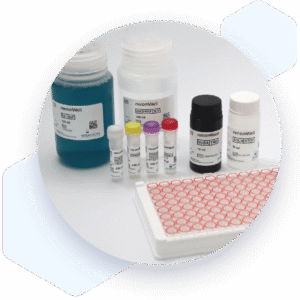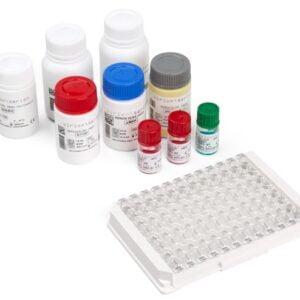| Weight | 1 lbs |
|---|---|
| Dimensions | 9 × 5 × 2 in |
| target | Influenza A Virus reactive IgA |
| species reactivity | Influenza A Virus |
| applications | ELISA |
| assay type | Indirect & quantitative |
| available sizes | 96 tests |
Influenza A Virus IgA ELISA Kit ESR1231A
$364.00
Summary
- Virion/Serion Diagnostic Kit for research use (RUO)
- Influenza A Virus IgA ELISA Kit
- Suitable for IgA detection
- Ready-to-use
- 96 tests
Influenza A Virus IgA ELISA Kit ESR1231A
| kit | ||||||||||||||||||
|---|---|---|---|---|---|---|---|---|---|---|---|---|---|---|---|---|---|---|
| Assay type Indirect ELISA | ||||||||||||||||||
| Research area Infectious Disease | ||||||||||||||||||
| Sample type Serum, plasma, whole blood | ||||||||||||||||||
Components
| ||||||||||||||||||
| Storage Store at 2-8°C. | ||||||||||||||||||
| Associated products Bordetella pertussis Filamentous Hemagglutinin (FHA) Antigen (BA120VS3) Bordetella pertussis Toxin Antigen (BA120VS4) Bordetella pertussis whole cell Antigen (BA120VS8) Bordetella pertussis Toxin Human IgA Assay Control (BC1201A) Bordetella pertussis IgA Control Serum (BC120A) Bordetella pertussis IgG Control Serum (BC120G) Bordetella pertussis Toxin IgA ELISA Kit (ESR1201A) Bordetella pertussis Toxin IgG ELISA Kit (ESR1201G) Bordetella pertussis IgA ELISA Kit (ESR120A) Bordetella pertussis IgG ELISA Kit (ESR120G) Bordetella pertussis IgM ELISA Kit (ESR120M) |
| target relevance |
|---|
| Protein names Influenza Virus A |
Data
Publications
| pmid | title | authors | citation |
|---|---|---|---|
| We haven't added any publications to our database yet. | |||
Protocols
| relevant to this product |
|---|
| ESR1231A protocol |
Documents
| # | ||
|---|---|---|
| EQ0116 | Safety Data Sheet | QC certificate |
Only logged in customers who have purchased this product may leave a review.




Reviews
There are no reviews yet.